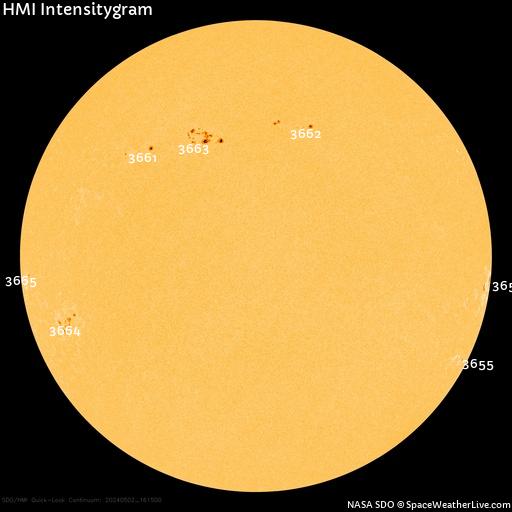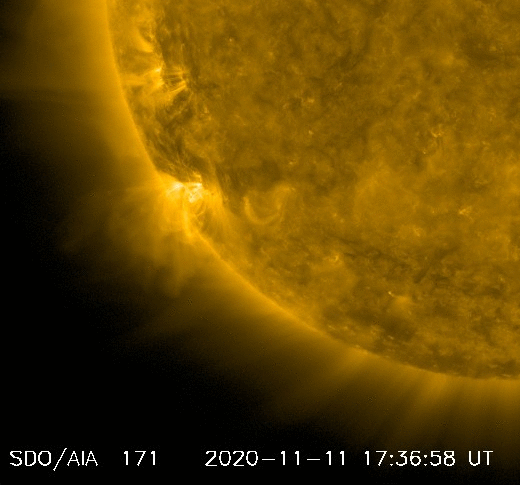- #36
Stavros Kiri
- 1,082
- 898
"Latest news

Tuesday, 12 September 2017 - 19:54 UTC
Coronal mass ejection arrival"
G1 minor Geomagnetic storm warning was issued the last hour or so (Kp 5 - Threshold reached 19:49 UTC)
+ (quoting from spaceweather.com):
"THE CME HAS ARRIVED: Arriving earlier than expected, the flank of a CME hit Earth's magnetic field on Sept. 12th (20:00 UT), and the impact has sparked a minor G1-class geomagnetic storm. NOAA forecasters say the storm could intensify to G2-class on Sept. 13th. If so, auroras in the USA could appear as low as New York to Wisconsin to Washington state. This is the CME that was hurled obliquely toward us by the X8-flare of Sept. 10th."
+ Edit (report highlights added from spaceweatherlive.com):
Current data suggest that it is not possible to see aurora now at middle latitudes
G2 - Moderate geomagnetic storm expected
The observed Kp index is 5- but the predicted K-indice of 6- indicates that stronger geomagnetic conditions might occur at this moment.
The solar wind speed is currently moderately high (575.7 km/sec.)
The strength of the interplanetary magnetic field is moderate (10.27nT), the direction is North(1.8nT).
S1 Solar Radiation Storm
Minor impacts on HF radio through polar regions
Tuesday, 12 September 2017 - 19:54 UTC
Coronal mass ejection arrival"
G1 minor Geomagnetic storm warning was issued the last hour or so (Kp 5 - Threshold reached 19:49 UTC)
+ (quoting from spaceweather.com):
"THE CME HAS ARRIVED: Arriving earlier than expected, the flank of a CME hit Earth's magnetic field on Sept. 12th (20:00 UT), and the impact has sparked a minor G1-class geomagnetic storm. NOAA forecasters say the storm could intensify to G2-class on Sept. 13th. If so, auroras in the USA could appear as low as New York to Wisconsin to Washington state. This is the CME that was hurled obliquely toward us by the X8-flare of Sept. 10th."
+ Edit (report highlights added from spaceweatherlive.com):
Current data suggest that it is not possible to see aurora now at middle latitudes
G2 - Moderate geomagnetic storm expected
The observed Kp index is 5- but the predicted K-indice of 6- indicates that stronger geomagnetic conditions might occur at this moment.
The solar wind speed is currently moderately high (575.7 km/sec.)
The strength of the interplanetary magnetic field is moderate (10.27nT), the direction is North(1.8nT).
S1 Solar Radiation Storm
Minor impacts on HF radio through polar regions
Last edited:












